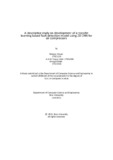A descriptive study on development of a transfer learning based fault detection model using 2D CNN for air compressors
Abstract
Fault Detection is essential for the safe and efficient operation of industrial manufacturing. Successful detection of fault features allows us to maintain a stableproduc- tion
line. Therefore, establishing a reliable and accurate fault detection method has become
a huge priority now. Historically, various artificial intelligence-based models are used to
predict faults in machines accurately to some extent. Mainly, machine learning and
deep learning-based processes are being used. However, there are some shortcomings
in those processes. Firstly, machine learning is mostly dependent on previous data and
fails to recognize new issues that have not been introduced to the model during the
training phase. Secondly, with deep learning, it is very time- consuming to reliably
classify faults and difficult to establish an effective model for complex systems of
current days. Thus, in our paper, we are proposing to use a transfer learning-based
optimization of the deep learning process to meet the re- quirements ofreal-time fault
classification and accurate detection of faultsin adverse operational conditions. We will
be using wavelet transformation of raw signal data to 2D images and constructing a
DCNN based transfer learning architecture toex- tract the fault features of the machine.
Finally, we will be feeding the network with data from our target domain for fine-tuning
the network to work accurately in the target domain. We will be testing with two cases
to find the accuracy and accuracy optimization over the deep learning (AAG) values of
our system. Finally, we will be comparing our architecture with state-of-the-art transfer
learning architectures from Keras.

